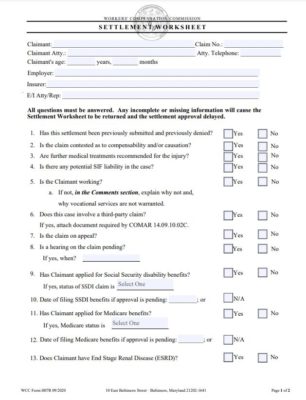In workers’ compensation, data is at the forefront of many professionals’ work. Lawyers focus on their individual practices and the matters they are managing, the number of cases in their personal work inventory, the time involved and of course the finances associated with the practice. In an active private practice, lawyers should have all the important information needed to be economically successful at their fingertips. In addition, they should track among other things, case inventories, referral sources, filing deadlines, and client needs.
A workers’ compensation regulator’s view ranges from the ground level, overseeing file audits for timeliness and proper form filing, to a ten-thousand-foot vision developing meaningful policy driven regulations and consulting on legislation. A regulator has access to a vast array of information. Almost all that can be quantified in regulatory records and tracked is regularly monitored.
The work of a post settlement administrator is focused on protecting a client's medical settlement funds, ensuring reasonable and proper medical care, and complying with the Centers for Medicare & Medicaid Services (CMS) reporting obligations. The private vendors working in this space likewise monitor all aspects of their operations.
I have recently discovered there is a glaring shortcoming in this data driven industry. The shortcoming is, few if any states or vendors track any data associated with full and final settlements.
The best and almost universal follow-up was, “if you are successful would you share what you learn, that could be extremely useful information.”
In recent months my curiosity has focused on how much regulators and other industry leaders know about the specifics of claim settlements. I have made inquiries ranging from the number of cases settled annually, to what is the fiscal impact of these settlements. Focused on the economics, how much is intended to fund future indemnity and how much is intended for future medical? Are there states that track the number of Medicare Set Asides rolled into settlements? After speaking with a few industry insiders, a frequent comment in the form of a question would arise. They would ask, “Does anyone track what happens with settlement proceeds after cases settle?”
The subtexts to the question raised several other concerns:
- Is the settlement enough?
- Is the settlement too much?
- Are the medical proceeds properly spent post settlement?
- What happens to the settling claimant and the funds once out from under the multiple watchful eyes of the system?
- In short, did the settling parties get it right?
I recently made a concerted effort to gather settlement information from both jurisdictions and national data organizations. Those efforts were universally unsuccessful. They did result in interesting email exchanges and personal conversations. A few repeated refrains were, “we do not track the financial aspects of a settlement,” or “we track cases up to settlement, but not after” and “you might want to contact the carriers, they know the numbers.” The best and almost universal follow-up was, “if you are successful would you share what you learn, that could be extremely useful information.”
Maryland Exemplifies Strong Settlement Data Collection
I discovered Maryland stands out as a state that understands the value of gathering settlement information. They have a form used when cases are settled. The form is completed by the parties and presented to the Board for review and approval at settlement. The form summarizes all the critical settlement elements, including the financial details discussed above. Unfortunately, the state has an older computer system, a system in the process of being updated, that is incapable of aggregating the information provided on these forms. Aggregation of the individual settlements would be the logical next step. The industry would benefit from having access to the information gathered on this form. Having the data provides valuable insight into what happens with cases where injured workers leave the system and conclude their claims via a settlement.
The picture we can put together today is incomplete. The available data lets us see the beginning of a claim. In most cases we watch the claims mature. When a case settles, the end does not unfold naturally. It comes to an abrupt halt. The lack of settlement information leaves an incomplete picture with little appreciation for how many claims conclude.
The Maryland form fills in this important gap. See the form below and the essential data it gathers. Broad regulatory adoption would help the industry better understand the details on how many cases conclude and would fill-in an important knowledge gap the industry has presently.




